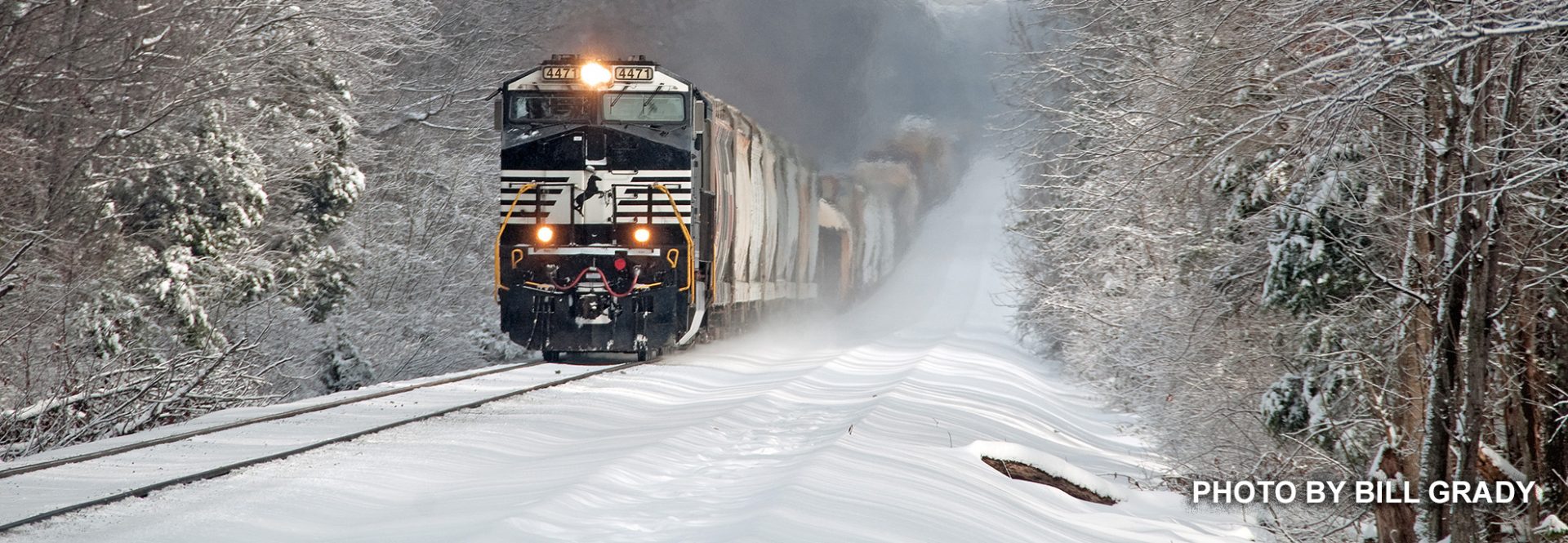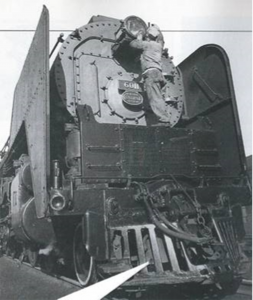




Hello again National Railway Historical Society, Western Kentucky Chapter members, and welcome to October! The first week of October feels more like August. But rest assured, we will make up for it! Cool weather is on the way.
We will have many things to discuss this month relating to upcoming events. Our annual Christmas Show, Breakfast with Santa and of course our own Christmas dinner will be some of those topics. Also, we will make our first call for nominees for officers as our election will be held in November. Your attendance to these meetings and events is paramount. We need everyone’s collective energy to make things work.
As for elections and first call for nominees, everyone is eligible to hold an office. We have the offices of President, Vice President, Secretary, Treasurer and Chapter Representative. If you would like to hold an office, nominate yourself and don’t be bashful.
Our annual fall picnic in Crofton was a good one. Several members enjoyed camaraderie and the passage of several trains. Bill Farrell along with Mrs. Farrell and others contributed to the food and much fun was had by those in attendance. This is one of our signature events and one enjoyed by many.
Jim Pearson should have a report on the recent photo contest. Hopefully Jim had more to choose from then everyone shot of the Union Pacific locomotive at Crofton!
Steve’s program last month was a DVD from his collection featuring passenger trains of the 60s. A lot of good shots and action of an era long gone. Big thanks to Steve.
So members, if you can make it to the meeting, rest a sure that you will be entertained. With new members coming on and cool weather, we always seem to enjoy our interests even more this time of year. I hope to see you there.
Although it’s not a railroad-related photograph, I thought it interesting. On an unusually foggy morning I arrived at the “bull pen” where several Hopkins County buses await their “engineers” to pull them out of their stalls for the morning run. I’m fortunate to be one of those engineers (my avocation) and function as a substitute almost every morning and one or two afternoons a week. If you know of anyone who might fit this part-time vocation well, please let me know. Bill Thomas, editor.

Don’t forget to join us for the West Kentucky Chapter of the National Railway Historical Society’s annual chapter picnic in Crofton, Ky next to the fire station. Any time after 9:00 am until ????? We will be grilling out with a coffee can for donations toward the food. Please bring your own chair and we will have three tables on site. Park you car out front of Veterans Park and walk back to the tracks unless you are handicapped. If so, you may park closer to the picnic area. Drive around in front of the fire station and we’ll find you a spot.
We hope that CSX will be good to us and provide us with lots of trains along the Henderson Subdivision! Weatherman is calling for a sunny day with only a 10% of rain so it should be a great fall day for watching and photographing trains! Don’t forget that it’s the last day you can shoot pictures for our members only September chapter photo contest! Entries are due by the 7th of October! We all hope to see you there!!!
Ok, at least ferry terminal is rail related, being the headquarters for the Southern Pacific railroad empire. I’ll admit I’m a sucker for old landscape pictures. What I find so interesting about this picture, is what’s not in the picture. In 1925 the SF/Oakland Bay Bridge was only a dream. In 14 years the area adjacent to Yerba Buena island’s north side, and behind the clock tower, will become the nearly square mile site of the 1939/40 Golden Gate International Exposition. Thus, Treasure Island is formed.
The shoals immediately north of Yerba Buena Island were a danger to shipping. Creating an artificial island by placing a jillion tons of rock and massive dredging of the harbor quelled that hazard. By the time the expo was over, war was brewing and the Navy seized the newly created island. It became a training base including an airfield. In 2007 the government sold the island to the City of San Francisco. On-going now is a multi-billion Treasure Island Development project for up to 8,000 new residences, 140,000 square feet of new commercial and retail space. The picture (above) is pretty cool too, taken in about 1936. The north tower of the Golden Gate bridge is near completion. The caisson for the south tower at the end of the temporary pier is not yet complete. The massive concrete structure at water’s edge is not part of the tower, rather a support for what will become the bridge approach. The adjacent land is part of the Presidio of San Francisco. The bridge opened in 1937 and a few years later a hurricane swept through the “Golden Gate” and to this day there are claims bridge is out of alignment, inward, by about 18 inches.
 Yes, that’s the bell, mounted behind the cow-catcher, or more officially, the Pilot. Whether the bell rotates with an independent clanger, or mounted rigid and mechanical, is unanswered. Perhaps a New York Central aficionado will set the record straight.
Yes, that’s the bell, mounted behind the cow-catcher, or more officially, the Pilot. Whether the bell rotates with an independent clanger, or mounted rigid and mechanical, is unanswered. Perhaps a New York Central aficionado will set the record straight.
There is a very good reason why the bell would be placed somewhere other than on top of the boiler, typical on most steam locomotives. Clearances were tight on the NYC and most others in the east. Early railroad infrastructure was built to a smaller standard, and as trains got longer and heavier the motive power and rolling stock grew in size. Lineside obstructions could be moved, but tunnels were unforgiving.
If we could see the of the top of the boiler, you would notice that smoke stack, whistle and other apparatus is also very low profile. Clearance issues is the reason dome cars were virtually nonexistent in the northeast. Double stack container trains were also late in coming to the east coast railroads for the same reason.
The loco above is one of New York Central’s finest, a Niagara 4-8-4 #6011 built by American Locomotive Company. Those smoke-lifting wings gave them a sleek appearance.
Credits: photo by Ed Nowak – NYC, as seen in Classic Trains magazine, Summer 2013
Submitted by Gary O. Ostlund